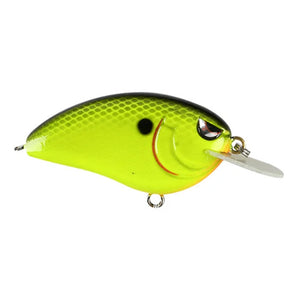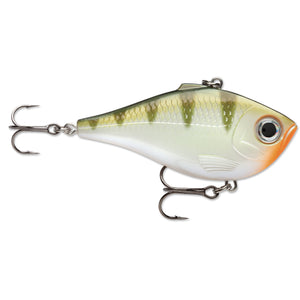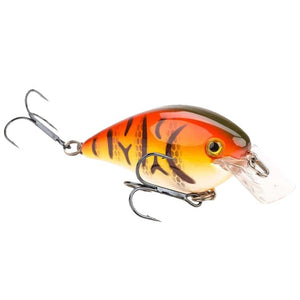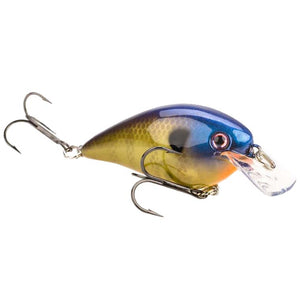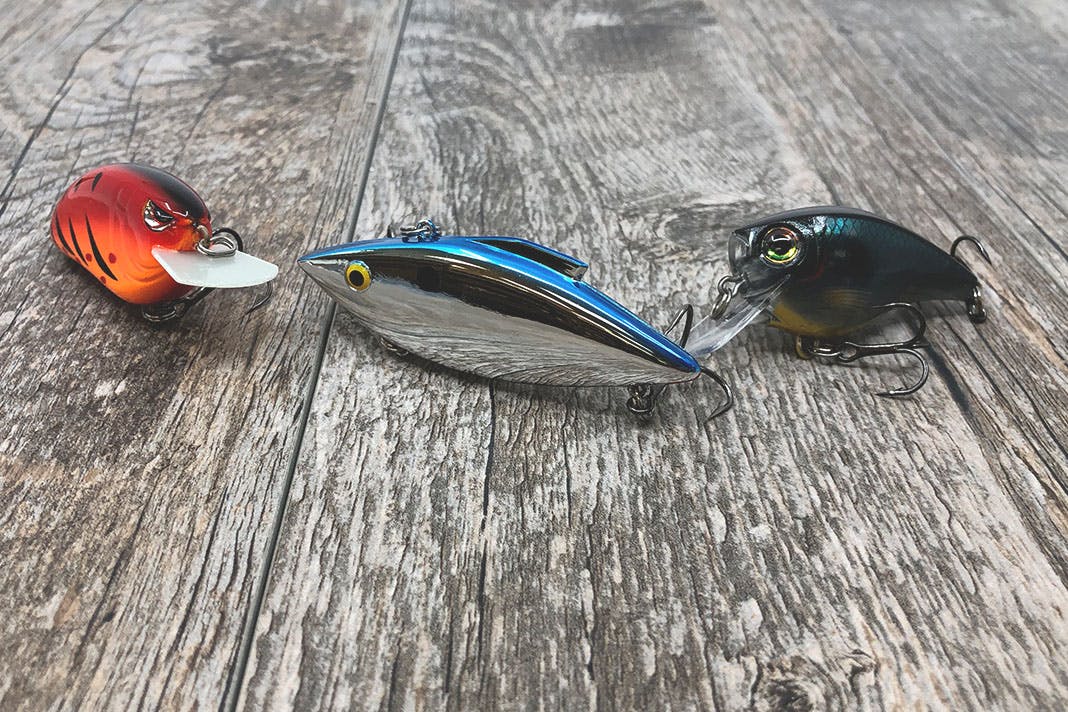
Cold Water Cranking
Cold Water Cranking
Cold water and cranking are often two concepts that don’t go together for most anglers. The truth is that crankbaits can be a valuable tool to help cover water and locate bass in their wintering holes. With the below information in mind, cold water cranking can prove to be a productive pattern.
Fish Behavior and Location in Cold Water
It’s no secret that bass become more lethargic when cold temperatures start setting in. Their metabolism slows, and easy meals become the perfect option for fish that are in no mood to roam or chase food. Bottom forage like crayfish become a more significant staple in their diets.
That doesn’t mean they won’t go after baitfish. If the opportunity presents itself, bass will inhale anything that comes into close proximity to them. They are ultra-aware of their surroundings primarily due to their lateral line, which they use almost exclusively in cold water situations. Sitting on the bottom in a motionless state is how most of the fish position themselves throughout the coldest months of the year. Locating them is the key to having productive days on the water.
Once located, you can almost guarantee they will be there for weeks or even months when the water remains its coldest. You can often have success year after year on the very same wintering holes. Bass are looking for several important habitat types in cold water. The first is being able to move throughout the water column with ease.
They don’t want to swim very far to move several feet up or down in the water column. That’s why focusing on bluff walls, channel swings, and points are all great options for locating fish. Another feature bass will want to be near is hard surfaces. Chunk rock, rip rap or docks all hold heat from the sun well after it has gone away. A two or three degree difference in water temperature will draw bait and in turn, bring bass.
Which leads to the last key feature of any wintering hole, forage. There has to be enough food in the immediate area where they don’t have to work very hard to stay alive through this time of year. Finding bait will find you bass.
Cold Water Crankbait Characteristics
There are generally three main characteristics you want to be aware of when throwing crankbaits in cold water. The first is water depth. In cold water situations, bass are typically deeper. You may even have a hard time locating fish on your graphs because they spend a lot of time hugging the bottom. With fish not willing to chase this time of year, reaching the exact depth they are at is the difference between getting bites or going home empty-handed. There are several ways to get your lure down farther.
The first is downsizing your line. Instead of throwing 12 to 15 pound fluorocarbon, go with a lighter 6 – 8 pound test line. The smaller diameter line will cut through the water better and allow that bait to dive an extra foot or two. Another popular option is to weight your bait just enough to affect the buoyancy but not too much where it inhibits the action. This can be achieved by switching out for larger hooks or adding suspend strips or light wire near the front treble hook. The last method to adding depth is by using a longer rod to help cast farther. The longer the cast, the more time a bait has to get down to the desired depths.
The second option for cold water cranking is a realistic, tight wobble bait. That action is common with flat sided or lipless crankbaits. The subtle action on tighter wobbling baits doesn’t overpower an area where bass are located. The tight wobble is notorious in cold water situations. It projects a sonic image that is picked up by the lateral line, and they can’t stand it.
The complete opposite can also be true in certain situations where an extremely wide wobble could be the ticket to eliciting a strike. Square Bills and Wiggle Wart style baits have proven to be successful in cold water situations. Again, the sonic image produced is unique and can cause reaction strikes out of lethargic bass. Another great feature with wide wobble baits is the ability to work it slowly. Crawling them past high percentage areas will increase your chances of getting a bite.
Both tight and wide wobble actions can work on any given day. It is up to the angler to try both and figure out what the fish prefer. In both instances though, proper depth and buoyancy are key.
3 Crankbaits Styles and How to Fish Them in Cold Water
Flat Sided: Cast past the spot you want to fish through and reel steadily until the desired depth is reached. Once bottom contact is made, make long sweeping motions with the rod. Pay close attention to the bottom composition as the bait bounces and hops along the floor. Transition areas are great places for bass to congregate. Once you have reached the end of the rod sweep, reel in extra line as you move the rod back to its initial position. That slight pause between movements, where the bait is hovering just above the floor, can cause an opportunistic bite to occur.
Omnia Bait: Spro Little John 50
Lipless: Although these baits technically have a flat side, they are entirely different in the way you fish them. After making a long cast to the high percentage area, let the bait fall on a slack line. This will give the bait a realistic flutter on the way down, imitating a dying baitfish. Once the lure hits bottom, slowly pull up with the rod, working it like a jig. Slow is key. Ripping it up, so you feel the vibrations through the rod is too much power for cold water applications. Let the bait fall back to the bottom on a slack line and reel in the excess before lifting the rod tip again.
Omnia Bait: Bill Lewis Rat-L Trap
Wide Wobble: Cast the bait past the desired area you want to focus in on. Start with a slow/steady retrieve to get the bait to the desired depth for bouncing along the bottom. Keep the same speed throughout the retrieve with subtle variation mixed in. Common variations include a slight pause or a jerk of the rod up/down/sideways. Anything that gives the bait something extra instead of reeling it straight in. Slow adjustments are needed since the reaction strike won’t be as hard in cold water.
Omnia Bait: Rapala BX Brat
With any cold water situation, don’t go out expecting to get a bunch of bites. Bass are in their least likely state to go after a lure. 7 - 10 bites could be a very productive day and the above tips will help you capitalize when one comes your way!

